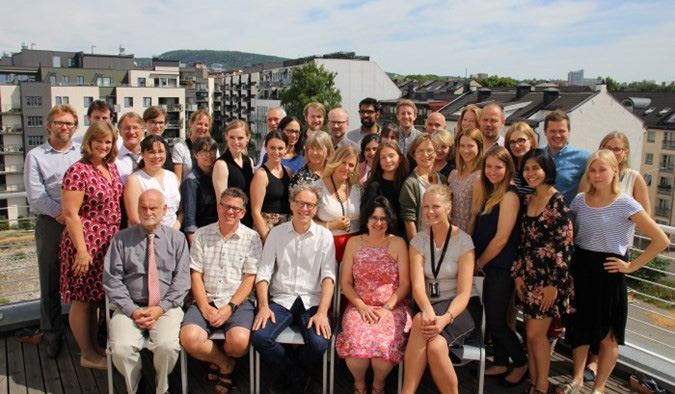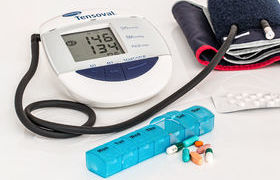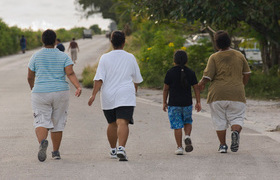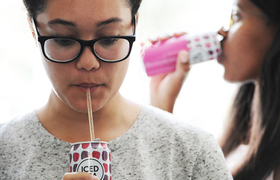Tackling the obesity health challenge
14 August 2019 | Story Nobhongo Gxolo. Read time 5 min.
The University of Cape Town’s (UCT) Division of Human Nutrition is part of a consortium of 14 research and advocacy organisations in nine countries encouraging local youngsters to help drive policy change to tackle the growing obesity epidemic in adolescents.
CO-CREATE, a study stationed at the Norwegian Institute of Public Health, comprises 10 different focus areas, number five being Youth Alliances for Overweight Prevention Policies. Young people are a key component throughout the project, designing policies and advocating practices they believe will help improve adolescent health.
At UCT, the project, which kicks off this month, is overseen by Dr Janetta Harbron’s team of five in the Department of Human Biology’s Division of Human Nutrition. The team members are Sharmilah Booley, Dr Olufunke Alaba, Marieke Theron, Megan Blacker and Sonia Malczyk.
Harbron said their aim is to work with the youth and various stakeholders in order to co-create new policy ideas with a view to ultimately helping to tackle adolescent obesity.
Statistics from Diabetes South Africa warn that if the current rate of increase continues, there will be about 3.91 million overweight (BMI 25–29.9) and obese (BMI > 30) schoolchildren in the country by 2025. This would result in 120 000 children with impaired glucose tolerance (pre-diabetes) and 68 000 with overt diabetes.
According to StatsSA, 69.6% of elderly people in the country are overweight as measured by body mass index (BMI).
Energy imbalance
Harbron said the causes of obesity are multiple, complex, and unique to various settings.
“Although an unhealthy diet high in energy and physical inactivity are responsible for the energy imbalance and consequent excess weight gain, the social, cultural, physical, political and economic environments we live in influence these lifestyle behaviours.
“Factors such as urbanisation, globalisation, nutrition, transition, food prices and the over-abundance of cheaper and palatable convenience or fast foods play a major role in food choices and dietary intake.”
“For instance, factors such as urbanisation, globalisation, nutrition, transition, food prices and the over-abundance of cheaper and palatable convenience or fast foods play a major role in food choices and dietary intake.”
She pointed to the fact that these convenience foods are often high in fat, sugar, refined carbohydrates and energy.

The situation is exacerbated by sedentary work, unsafe environments and lack of opportunities for daily physical activities, all combining to fuel South Africa’s obesity epidemic.
CO-CREATE’s aim is to tackle the issue by working with adolescents to create, inform and disseminate obesity-preventive evidence-based policies.
Its underlying context is how healthy lifestyles can be supported by broader policies, shifting the focus from individual responsibility to a model emphasising how healthy lifestyles are affected by structural factors.
Funding was received from the European Commission’s Horizon 2020 research budget.
Unhealthy choices
Harbron said the fact that unhealthy choices are often the easiest means that educating society about healthy lifestyles is no longer enough.
“Too often people cannot be fully responsible for their own lifestyle and health-related behaviours, such as in an environment where healthy options or behaviours are unavailable, unaffordable or impractical to execute.”
This means effective policies and guidelines are essential in order to reshape the food and physical activity systems to support an active lifestyle and healthy dietary intake.
“Most children/adolescents can be reached as a captive audience in schools, ideally with health-promotion content built into various curricula.”
“The overall CO-CREATE project will contribute to the evidence for policy changes to make healthy choices the easiest, preferred and most affordable choices for adolescents,” she said.
The risks of obesity include higher risk of non-communicable diseases (NCDs) like heart disease, high blood pressure, asthma, diabetes, hypertension, cardiovascular and kidney disease. Once obesity is established, it becomes difficult to treat and often extends into adulthood, Harbron warned.
Health education is of paramount importance in communicating the risk factors of NCDs, as well as implementing preventative strategies and interventions.
“Most children [and] adolescents can be reached as a captive audience in schools, ideally with health-promotion content built into various curricula. These messages must be supported by conducive environments: reduced access to unhealthy food and beverages, safe spaces for activity and exercise, as well as decreased social pressures, and decreased marketing of unhealthy products [and] lifestyles,” she said.
Including youth in the process of developing policies aimed at them is essential.
“Through our research, we would like to empower youth and increase their readiness to take action,” Harbron said.
 This work is licensed under a Creative Commons Attribution-NoDerivatives 4.0 International License.
This work is licensed under a Creative Commons Attribution-NoDerivatives 4.0 International License.
Please view the republishing articles page for more information.










